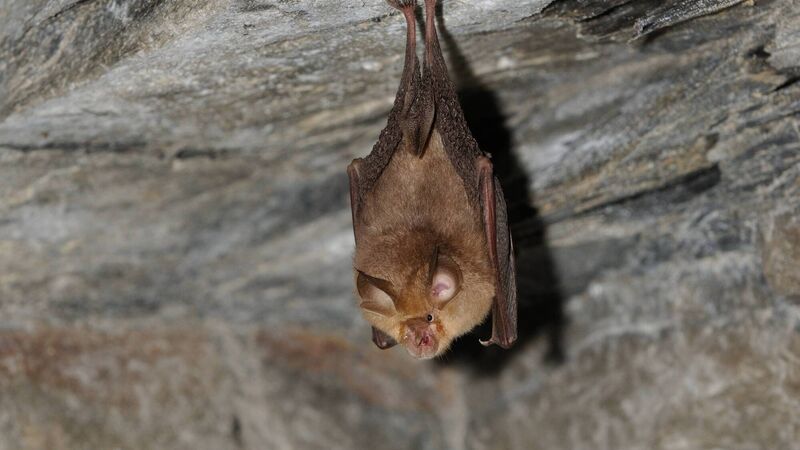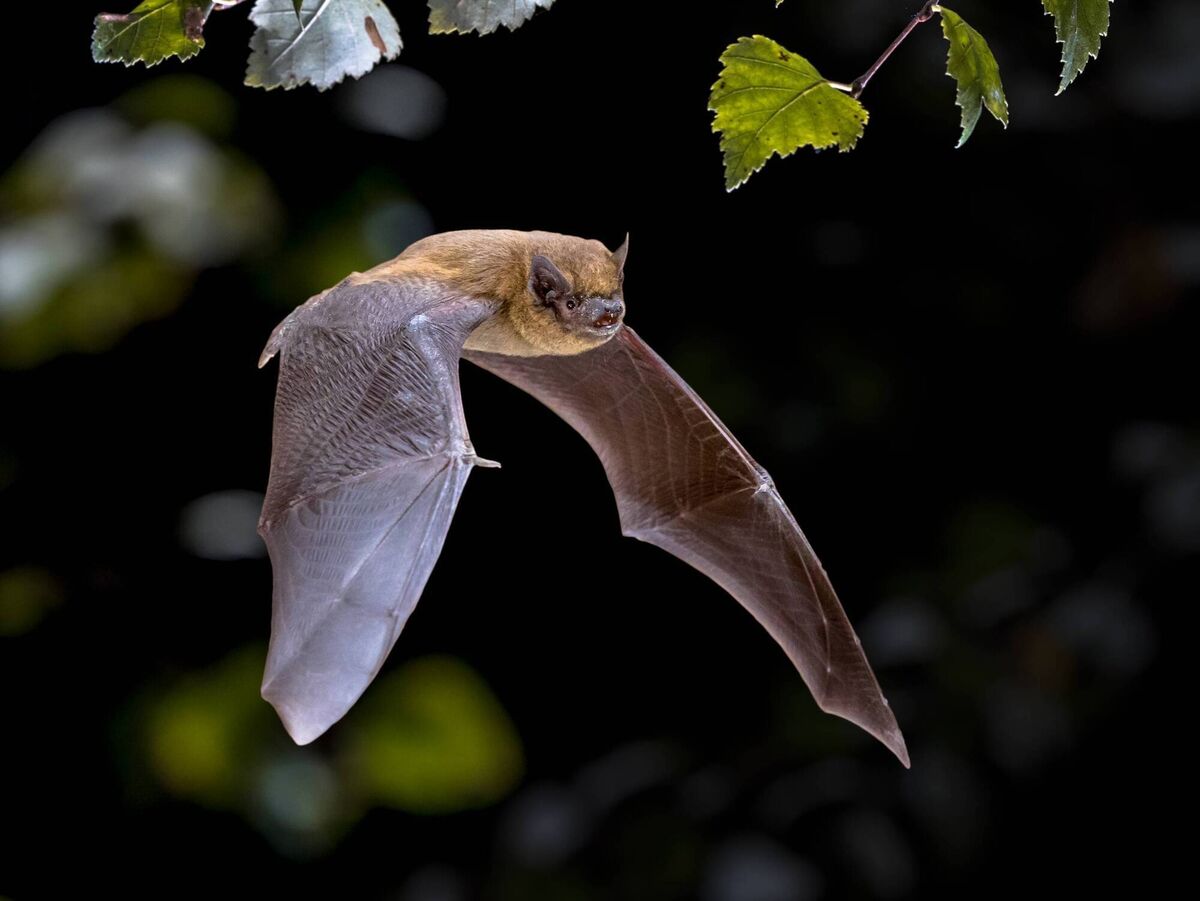Why it's so important not to disturb hibernating bats

Anja Murray: "In preparation for hibernation, bats must first find a safe hibernaculum — a suitable place for them to hibernate."
It's cold outside and the days are short. Many of us are spending these mid-winter days in our own version of ‘hibernation’.
Bats, though are unique in their approach to surviving the winter. During autumn, they will have been entering occasional ‘torpor’, but once the winter really sets in, they go in to a proper, physiologically induced state of hibernation — a way of adapting to the lack of insect food available through the cold winter — using stored body fat as fuel.
The only other animals here who hibernate are hedgehogs. I can’t include brown bears in this list, though they too hibernate and were once native and widespread here.
In preparation for hibernation, bats must first find a safe hibernaculum — a suitable place for them to hibernate. Somewhere sheltered from wind and rain and protected from temperature fluctuations too.
Little is known about where the majority of bats in Ireland hibernate, though we do know that they tend not use caves as much as their continental cousins. Only Lesser horseshoe bats, the rarest of our bats, depend on underground sites such as caves, mines and cellars for winter hibernation.
In the past, when Ireland was still covered in woodland, bats would have been well-catered for in the deep hollows of old trees. Now that we have so few trees, especially old, gnarly trees with hollows and crevices, bats have adapted to roost and to hibernate in buildings and other human structures.
Pipistrelles, one of the most common of bats here, hibernate in crevices of buildings, bridges and even in expansion joints in big concrete structures. Other locations include old stone churches, cellars, attic spaces of old buildings, clefts in old stone bridges, and mine shafts.

During hibernation, bats’ metabolic rate drops, so the rate at which they use up stored body fat slows and they can stretch their fat reserves last through the coldest months. This involves slowing down the heart rate.
On average, a bats heart rate is in the region of 800 beats per minute, but in hibernation, this drops to as low as 18 beats per minute. Another mechanism for saving energy is to drop their body temperature, from a normal body temperature of 35° Celsius to about 8°, matching the ambient temperature of the hibernation site.
This is why its important that their hibernation hideaways don’t get too cold.
Female bats have the incredible physiological ability to control when they get pregnant. They mate at the end of the summer, before entering hibernation, and they retain the sperm throughout the winter without getting pregnant.
Only when she ovulates in Spring, after hibernation, will she become pregnant. This is one of the reasons why the timing of their emergence from hibernation is crucial.
Even when sheltered from outside temperature fluctuations, bats are able to detect changes in atmospheric pressure, alerting to the oncoming spring. After the long winter sleep, they will have lost a third of their body weight over winter.
Bats may leave the roost on warmer nights as early as February to find food and a drink of water. Small special fat reserves remain that can be rapidly deployed to warm up upon waking, though bats in spring will be in need of plentiful protein to build up their energy again.
This means lots of flying insects, from midges to moths and all in between. If food is scarce or bad weather hits, they can enter a state of torpor to help them get through.
During hibernation, bats are vulnerable to disturbance. If they are woken up, they use energy to warm up but won’t have enough reserves to see them through winter... leaving them without enough energy to make it through to spring.
It is illegal to disturb bats, whether in hibernation, in regular roosting sites during the year, or in maternity roosts in summer. If there are bats in your attic, cellar, or outbuildings, leave them be, they don’t bring in nesting materials and will not gnaw wood or electric cables.
If works are planned that might disturb resident bats, make sure to consult with the National Parks and Wildlife Service to find out how to approach works with the safety of bats in mind. Rendering and repointing of stone work, for example, can exclude or entomb bats in crevices.
Light pollution is another way we can unintentionally impair bats. Artificial light at night (‘ALAN’) includes ‘always on’ lighting outside our homes, along roads, bridges and flood lit sports grounds and car parks.
Because bats' essential needs are compromised by many of our activities, we can be proactive in helping these gorgeous little mammals wherever they do occur.
Encouraging growth of native trees and plant life is a good place to start. Winter is a time for planting trees: start by selecting the right species for a copse of trees or a native hedge in your garden, school, farm or workplace.
In time, wooded habitats will fill up with wildflowers, butterflies, bees, hedgehogs, and bats, all of whom will appreciate the resources offered by trees as they grow. Early flowering native trees such as blackthorn provide nectar and pollen for small flies in February and March, which in turn provide food for bats as they emerge from hibernation.
Bats like to hunt along the sheltered lee of treelines and hedgerows, so enhancing existing hedges by filling in gaps and encouraging a greater mix of native species and will help them in their nightly hunting forays.
Ponds and wetlands are excellent habitats that support a range of flying insects. Bats will busy themselves snatching craneflies, caddis flies, midges and moths from just above the water, a joy to watch as dusk sets in.
Bats are mammals like us and need a good supply of fresh water to drink directly from too.
Pesticides, including various sprays and weedkillers, will of course remove plants and small invertebrates that make up the base of the food chain, as well as building up to toxic levels in the bats and insectivorous birds.
The greater the diversity of habitats, the greater the diversity of and quantity of flying insects that bats depend on, and lots of other wild species too.







